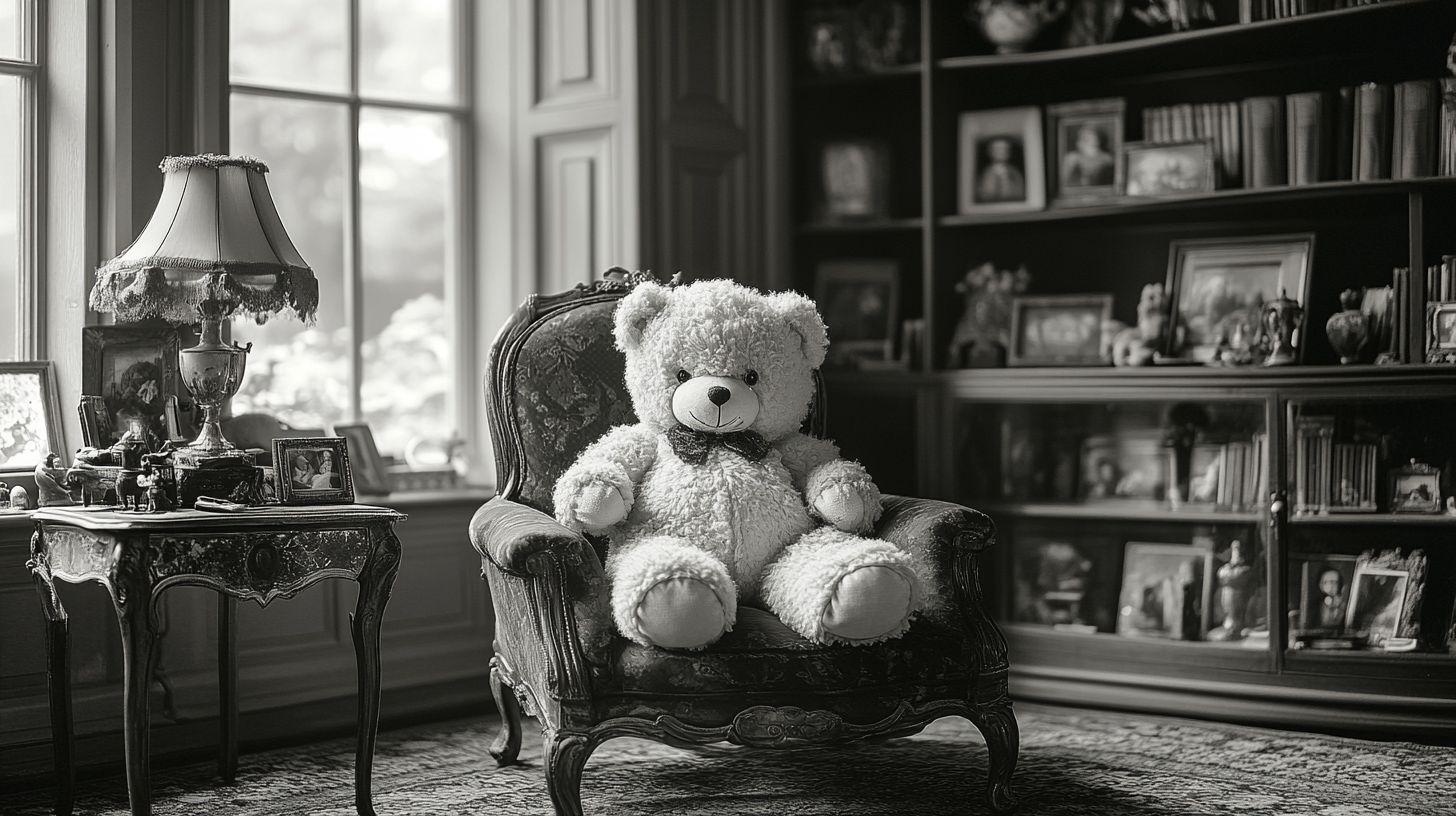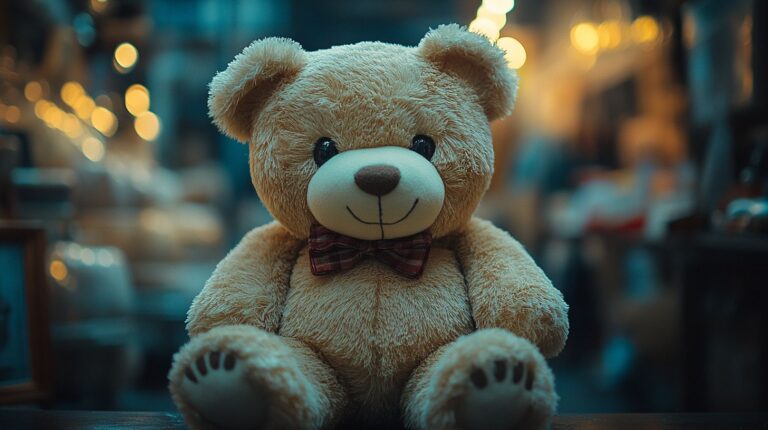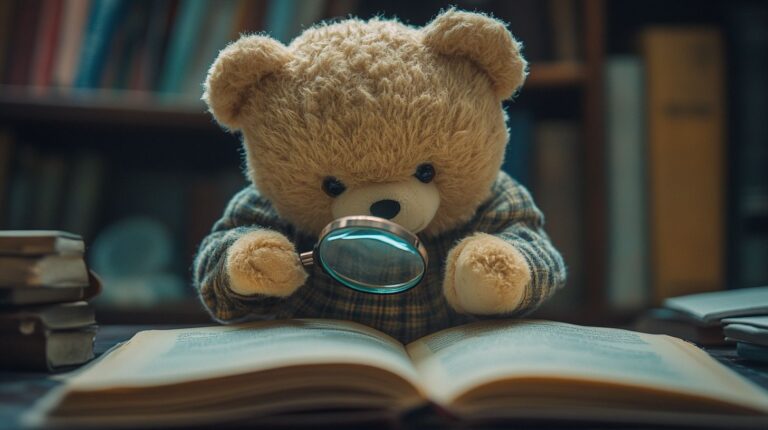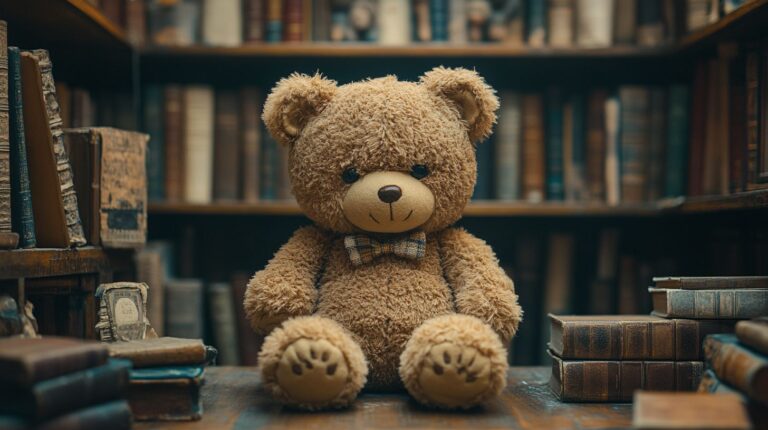Starting a teddy bear collection is rather magical, though it helps to have a solid plan in mind. I'm particularly fond of specialising in specific eras – the vintage Steiff bears are absolute treasures, whilst those lovely Merrythought bears from the 1950s have their own special charm. Mind you, one needn't splash out straightaway; a sensible budget of £50 to £100 per bear works brilliantly for beginners.
The British Bear Collectors Club is worth every penny of the membership fee. Their gatherings are brilliant for picking up tips about spotting genuine articles, and you'll meet the most fascinating characters who've been collecting for decades. Besides, there's nothing quite like holding a proper vintage bear and learning to spot those telltale signs of authenticity – the hand-stitching, those distinctive glass eyes, and the way the mohair feels beneath your fingers.
Do invest in proper display cases, though. It's heartbreaking to see lovely old bears damaged by dust or sunlight. Rather oddly, I've found myself becoming quite protective of my little collection – they're more than just stuffed toys, really. Each one has its own personality and story to tell. Whilst some collectors chase after whatever's trendy, I'd say it's far better to choose the bears that genuinely speak to you, even if they're not the most valuable specimens.
Key Takeaways
Building a proper teddy bear collection really comes down to finding your niche. I'd suggest picking something that speaks to you personally – perhaps those gorgeous vintage Steiff bears with their distinctive button in ear, or charming costumed bears sporting everything from ballet tutus to cricket whites.
When starting out, it's sensible to set aside £50-£100 per bear, though particularly special pieces might warrant stretching the budget a bit. Mind you, it's worth deciding early on whether you're collecting purely for joy or hoping to make a smart investment – both approaches are perfectly valid, but they'll shape your choices rather differently.
Quality is absolutely crucial. Have a proper look at the stitching (it should be neat as pins), check that the stuffing hasn't gone lumpy, and ensure those glass eyes are firmly attached. The nose embroidery tells you loads about craftsmanship – wonky stitches are a bit of a red flag, if I'm honest.
Proper storage makes all the difference to keeping your bears in tip-top condition. A lovely glass display cabinet not only shows them off beautifully but helps protect them from dust and sticky fingers. Do keep an eye on humidity levels – somewhere between 45-55% is spot on for preventing deterioration.
Rather essential to keep detailed records, particularly for your pricier companions worth over £100. Pop down the maker's details, when and where you found them, and snap a few good photos. Trust me, you'll be glad of those notes down the line when trying to recall the story behind each beloved bear.
Starting Your Collector's Journey
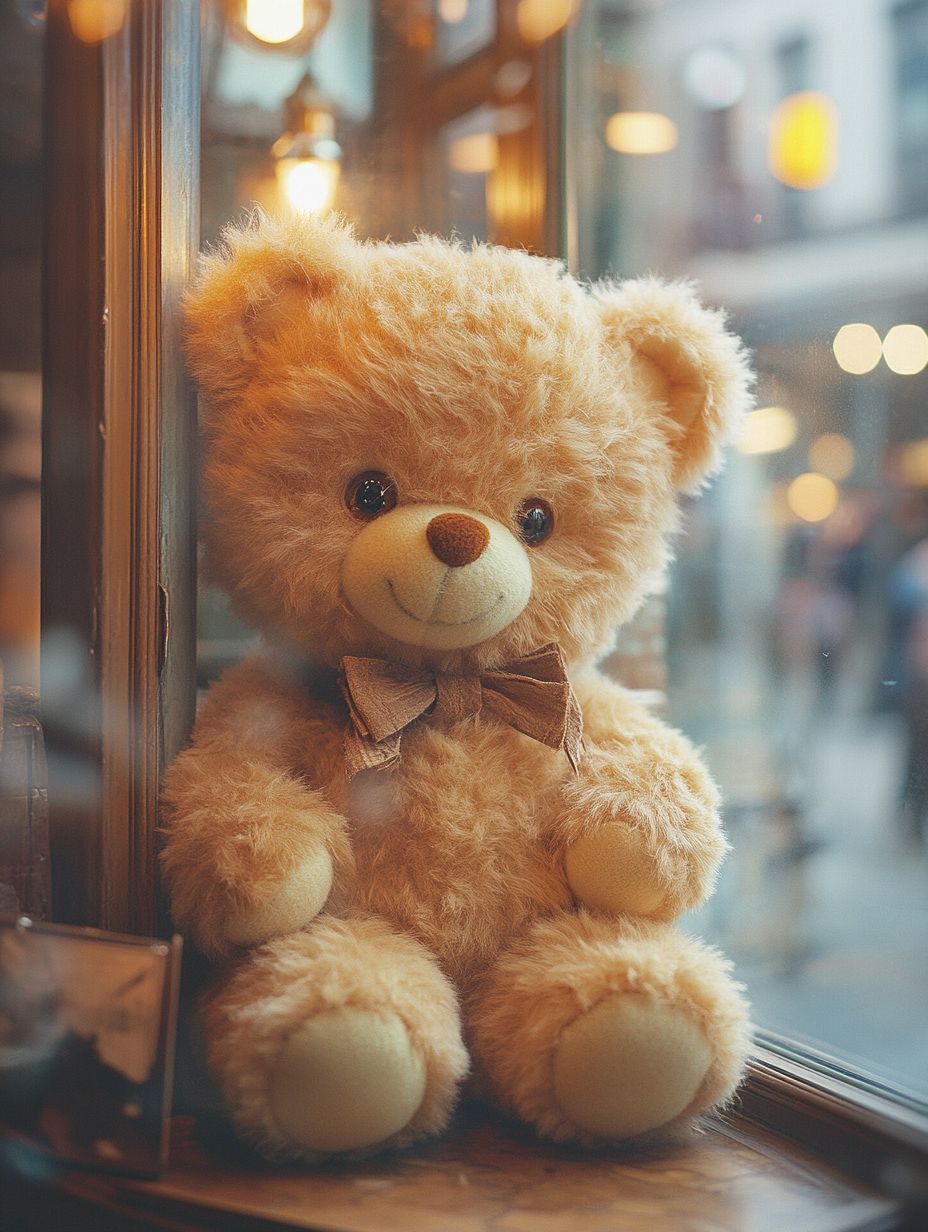
There's something rather magical about starting a teddy bear collection – it's all about following your heart rather than getting caught up in what others think you should collect.
Most collectors find themselves drawn to particular styles or periods. You might fall in love with the exquisite craftsmanship of vintage Steiff bears, which can fetch eye-watering sums at places like Christie's, or perhaps the charming character of Merrythought's distinctly British creations is more your cup of tea.
The early 1900s produced some absolute treasures, though plenty of modern limited editions have their own special appeal.
Popping along to the British Bear Collectors Club meetings can be brilliant – they're a friendly bunch who really know their stuff.
As for getting started, set aside a modest sum – say £50 to £100 for your first bear – and take your time exploring specialist shops and antique fairs. Rather than trying to amass everything in sight, you might find it more satisfying to focus on bears from a particular maker or era.
Do keep proper documentation of your purchases, especially those all-important certificates of authenticity.
And mind how you store them – these cherished chaps need protecting from dust and moths.
Choosing Collection Themes
Having a clear theme for your teddy bear collection makes all the difference – it's rather like telling a story through your bears, really. While some collectors simply buy whatever catches their fancy, there's something quite special about building a thoughtfully curated collection.
You might find yourself drawn to the charm of vintage Merrythought bears from the 1950s, with their wonderfully worn fur and gentle expressions. Or perhaps tiny bears are more your cup of tea – those sweet little chaps under 15 centimetres can be absolutely delightful.
Bears in costumes tend to fetch my interest, particularly the dapper railway conductors and jolly sailor bears who seem to have such personality about them.
The grand old names like Steiff and Chad Valley certainly warrant consideration, though they're not everyone's favourite. Historical bears tell fascinating tales – Victorian-inspired pieces or bears from the War years each carry their own remarkable stories.
For those keen on something a bit different, specialising in mohair bears can be rather rewarding, with particularly fine specimens fetching upwards of £100 at auction houses.
Mind you, whatever theme strikes your fancy – be it bears from different corners of the globe or those with literary connections – the key is choosing something that genuinely excites you. After all, you'll be spending countless hours hunting down these furry treasures.
Defining Your Collection Goals
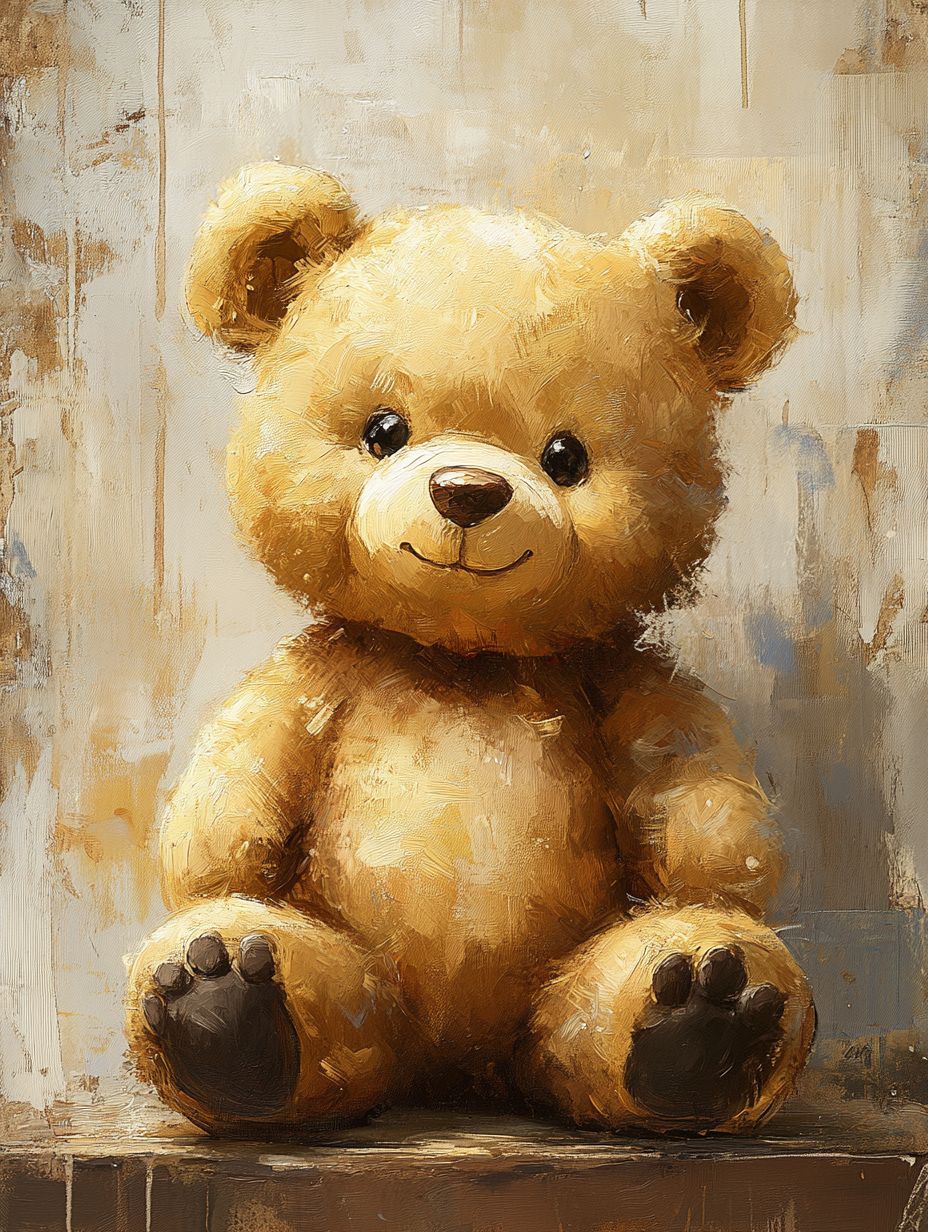
Setting Your Collecting Compass
There's something rather special about having a clear vision for your teddy bear collection. It's not just about avoiding costly blunders – though that's certainly helpful – it's about creating something meaningful, whether you're preserving precious childhood memories or building a properly impressive investment portfolio.
First things first: have a proper think about what drives you. Perhaps you're in it purely for the joy – that flutter of excitement when spotting a lovely old Merrythought at the local jumble sale. Or maybe you're keen on the investment angle, in which case you'll need to get stuck into the nitty-gritty of market values, grading systems and authentication. Most collectors, if we're honest, end up somewhere in between.
Mind you, it's worth being practical about space and budget. A carefully curated collection of 20 bears often brings more satisfaction than countless impulse purchases gathering dust in the box room.
Set yourself some proper targets – you might fancy tracking down one premium vintage bear each quarter, or perhaps completing a set of 1950s Steiff bears over five years.
Do factor in the extras though – decent display cabinets don't come cheap, and insurance for the valuable ones isn't optional. The key is building something you'll treasure without breaking the bank.
Evaluating Bear Quality
Looking for a proper teddy bear requires a discerning eye, and I've learned there's quite a knack to spotting the good ones.
The stitching's absolutely crucial – you'll want to see neat, tight rows without any bothersome loose threads poking about. Those seams should lie perfectly flat, especially where the arms and legs meet the body. Give the fur a gentle tug whilst you're at it; decent mohair or plush shouldn't shed all over your jumper.
The stuffing makes all the difference, really. A properly made bear ought to feel rather like squeezing a firm cushion – not too hard, mind you, but certainly not floppy either. Watch out for those annoying lumpy bits or hollow spots that cheaper bears often suffer from.
The nose embroidery's a dead giveaway, too. If it's gone wonky, chances are the rest of the craftsmanship isn't up to scratch.
Those eyes need a proper checking – give them a good wiggle to ensure they're not going anywhere. Traditional glass eyes are absolutely lovely, though they'll cost you a fair bit more than the plastic sort.
If you're keen on vintage bears, do have a thorough look at the paw pads – particularly on pre-1960s specimens, as they tend to wear through something dreadful. The joints should move about nicely as well; there's nothing worse than a bear that's stiff as a cricket bat when you're trying to position it just so.
Vintage Bears Vs Modern Bears
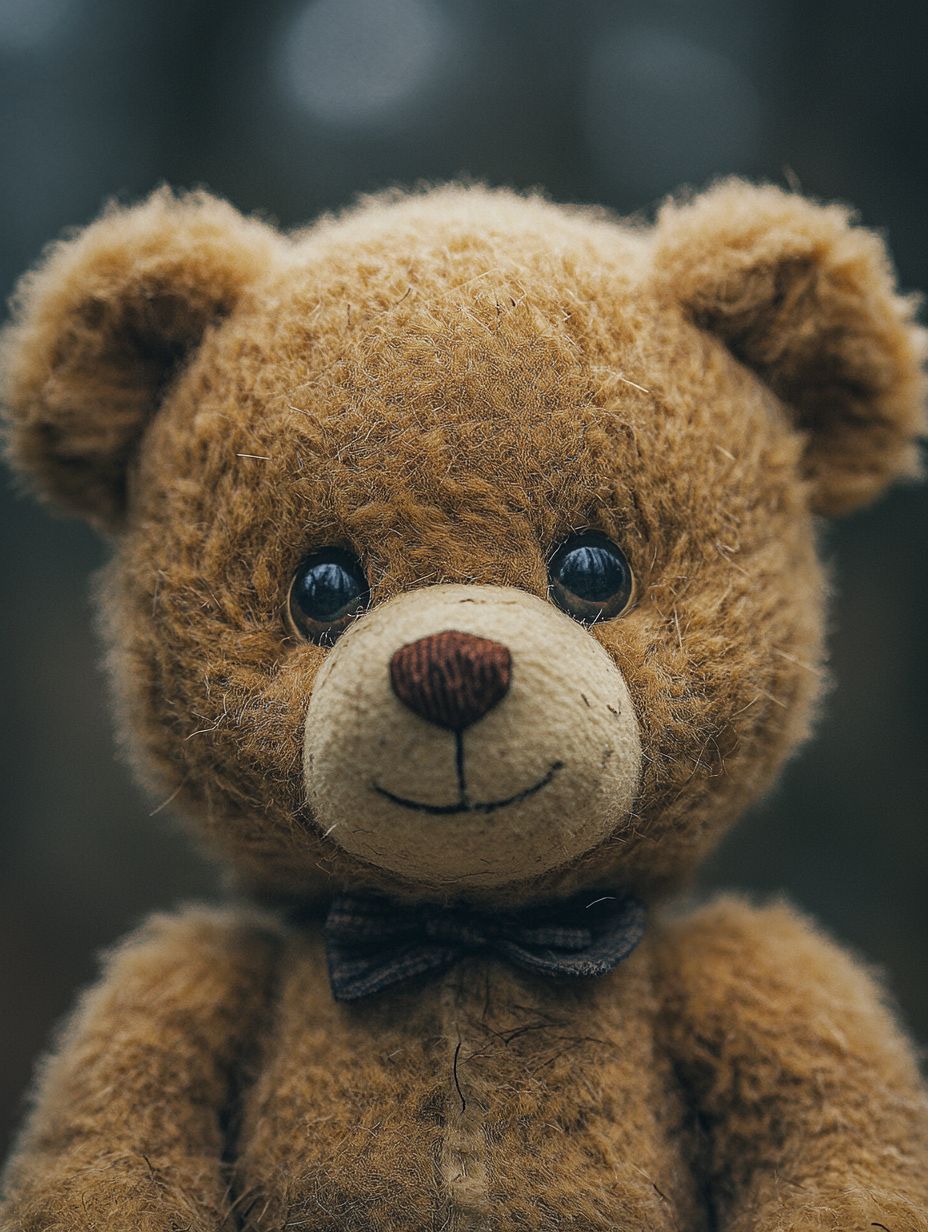
There's something rather special about vintage teddy bears – they've got this distinguished air about them, like elderly dons shuffling through Oxford's cobbled quads.
With their mohair coats, glass eyes and traditional excelsior stuffing, they're worlds apart from their modern cousins. Today's bears sport synthetic fur, safety eyes and polyester filling, which admittedly makes perfect sense for contemporary collections.
Mind you, getting your hands on a proper vintage bear requires deep pockets these days. You're looking at £500 minimum for decent examples, and the rare ones can fetch thousands at auction.
That said, modern bears are brilliant if you fancy something more practical – they'll survive a spin in the washing machine without losing their charm. Quite a few clever manufacturers like Charlie Bears have cottoned on to this, producing hardy bears with vintage-inspired touches.
The storage faff is rather different too. Vintage bears need mollycoddling with acid-free tissue and carefully controlled environments, whilst modern chaps are happy enough with the occasional dusting.
Rather reminds me of comparing a delicate vintage motorcar with a modern runabout – both lovely in their own right, but requiring rather different levels of attention.
Whether you're drawn to the historical appeal of the old bears or the practical charm of new ones, there's room for both in any worthwhile collection.
Storage and Display Methods
Looking After Your Bears: Storage and Display
There's nothing quite like a well-displayed teddy bear collection, but keeping these cherished companions in tip-top condition requires a bit of thought. Mind you, it's worth the effort – especially if you've got some proper vintage beauties in your collection.
If you're lucky enough to own museum-quality bears worth over £500, a glass cabinet is absolutely essential. For your everyday favourites that get regular cuddles, open shelving works brilliantly. Those precious Victorian specimens belong in archival boxes, whilst cotton bags are brilliant for keeping the dust at bay on bears that aren't on show.
The trickiest part might be finding the perfect spot to display your furry friends. Keep them well away from windows – British sunlight may be sparse, but it'll still fade their fur something rotten. As for humidity, you're aiming for 45-55%. Living in a particularly damp corner of Britain? A dehumidifier might be your best investment yet.
Do give your bears a shuffle round now and then – it stops their joints from getting stiff and their stuffing from settling awkwardly. Rather particular about your vintage bears? Pop on some cotton gloves before handling them. The oils from our hands aren't kind to old fabrics.
A soft-bristled brush should sort out most cleaning needs, though if you're sitting on a bear worth north of £1,000, best leave it to the experts.
Documenting Your Collection
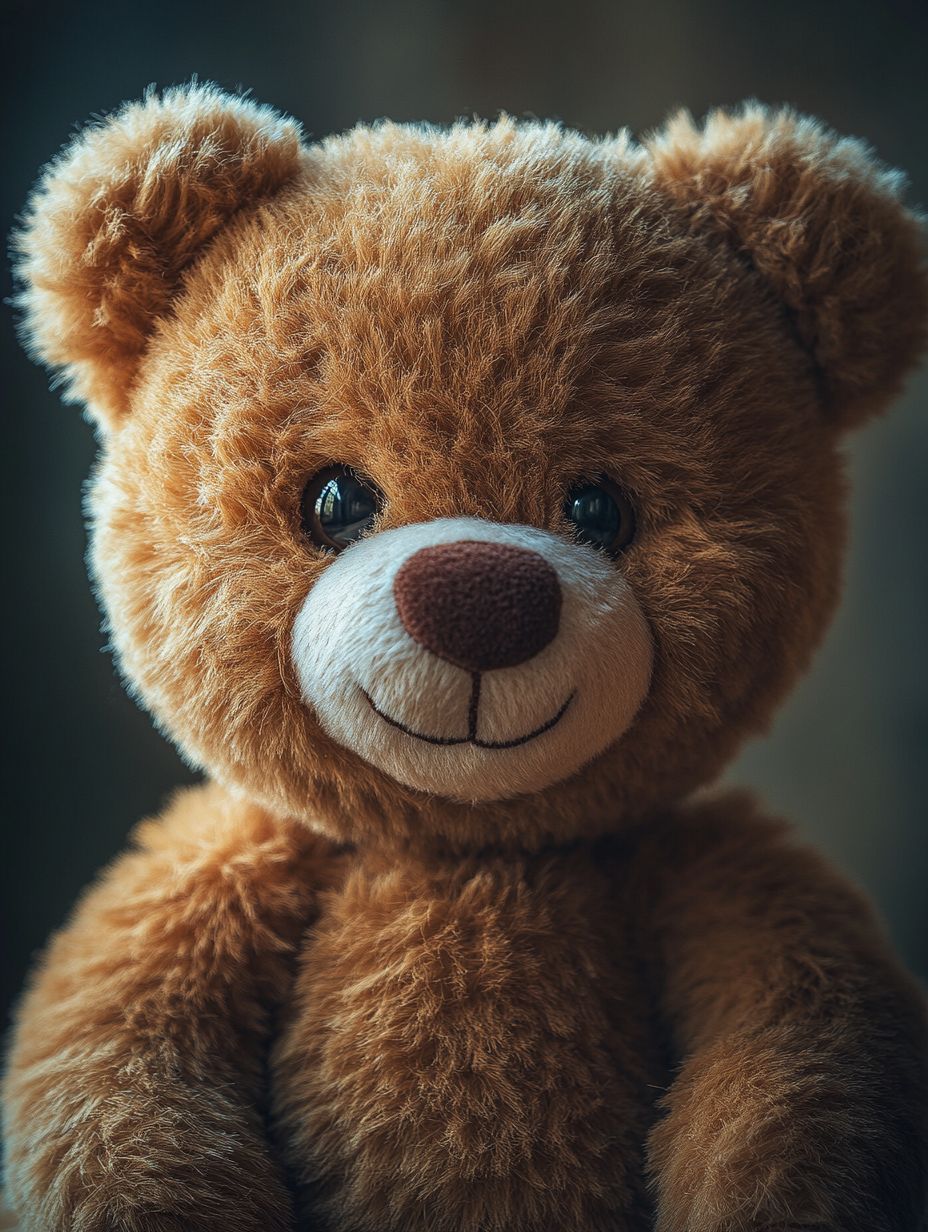
Keeping Track of Your Bears
There's something rather satisfying about documenting a teddy bear collection properly – it's not just about insurance (though that's jolly important), but about celebrating each furry friend's unique story.
Whether you're working with a proper leather-bound journal or a digital spreadsheet, you'll want to note down the vital statistics: height and width in centimetres, what you paid in pounds, and those charming quirks that caught your eye in the first place.
The serious collector might fancy a proper cataloguing system. I'd recommend jotting down the manufacturer, when you acquired each bear, and what sort of nick it's in.
Photography is absolutely essential, particularly for those special specimens worth north of £100 – and do make sure to snap those maker's labels and tags from different angles. Rather useful should anything unfortunate happen.
Mind you, half the fun is in recording where each bear came from – perhaps that delightful church fête in the village, or maybe you queued for hours at the Harrods Christmas sale.
Pop in any certificates or original boxes you've kept, and if you're really keen (as many of us are), keep tabs on when you've given them a good brush or repair.
Brilliant for trading with other collectors, and rather wonderful for whoever inherits your furry family down the line.
Finding Rare Pieces
There's something magical about hunting for rare teddy bears – it's not just about trawling the usual spots like John Lewis or Harrods. The real treasures tend to pop up in the most unexpected places.
While prestigious auction houses like Christie's and Bonhams regularly showcase valuable bears, I've always found the best discoveries happen at local antique fairs and vintage markets dotted across Britain.
Mind you, never underestimate charity shops and boot sales. It's quite remarkable, really – pristine Steiff bears occasionally surface for mere pennies, and more than a few lucky collectors have stumbled upon valuable Merrythought specimens whilst rummaging through jumble sales.
Rather useful to join specialist groups and pick up magazines like 'Bears and Soft Friends' – they're brilliant for catching wind of private sales before everyone else does.
Authenticity can be rather tricky to pin down, though proper research is essential. The devil's in the details: original labels, period-correct joint mechanisms, and authentic materials all tell a story.
Those early bears from the 1900s typically sport proper mohair, wood wool stuffing, and proper glass eyes – not the plastic stuff you see nowadays.
Values can be eye-watering; a decent 1904 Steiff might set you back £2,000, whilst a lovely Chad Valley from the 1920s could fetch £500 if you're lucky.
While online communities and dealers can offer guidance, nothing quite beats developing your own expertise through hands-on experience.
Connecting With Fellow Collectors
Connecting with Fellow Collectors
There's something rather special about meeting other teddy bear enthusiasts – it truly transforms collecting from a quiet hobby into something far more sociable. Whilst the internet's brilliant for reaching collectors worldwide, nothing quite beats a proper chat over a cuppa at your local club meeting.
| Connection Method | Benefits | Best For |
|---|---|---|
| Local clubs | Face-to-face interactions, viewing collections | Meeting collectors within 80 kilometres |
| Social media groups | Quick responses, global reach | Daily updates and market trends |
| Specialist forums | Detailed discussions, expert advice | Technical restoration queries |
Mind you, the real magic happens at collectors' fairs and exhibitions dotted across Britain. The Hugglets fair in London is an absolute must – practically bursting at the seams with hundreds of passionate collectors each year. Though honestly, some of the smaller regional events can be just as rewarding, if not more so. I've seen countless collectors stumble upon absolute gems through friendships forged over shared enthusiasm for vintage Steiff bears or restoration techniques.
These gatherings are particularly brilliant for picking up those little nuggets of wisdom about authentication and preservation that might otherwise take ages to figure out on your own. Pop along to a few meets, and you'll soon realise there's always someone happy to share their expertise – whether you're puzzling over a mysterious maker's mark or wondering about the best way to clean delicate mohair.
Conclusion
Let's be honest – once you start collecting teddy bears, they have a funny way of taking over. First it's just a shelf or two, then suddenly your living room resembles a plush menagerie. Your other half might raise an eyebrow at spending serious money on century-old mohair treasures, but there's something rather magical about curating these charming companions from different eras. Perhaps it's a touch eccentric to know the precise difference between a 1902 Steiff and a 1904 Chad Valley, but that's half the fun, isn't it? Besides, these bears have personality by the pawful – each one tells its own story through well-worn patches and carefully-mended seams. So whilst some might question dedicating precious space to vintage teddies, true collectors understand: these aren't just toys, they're pieces of history wrapped in fur and stuffed with memories.

